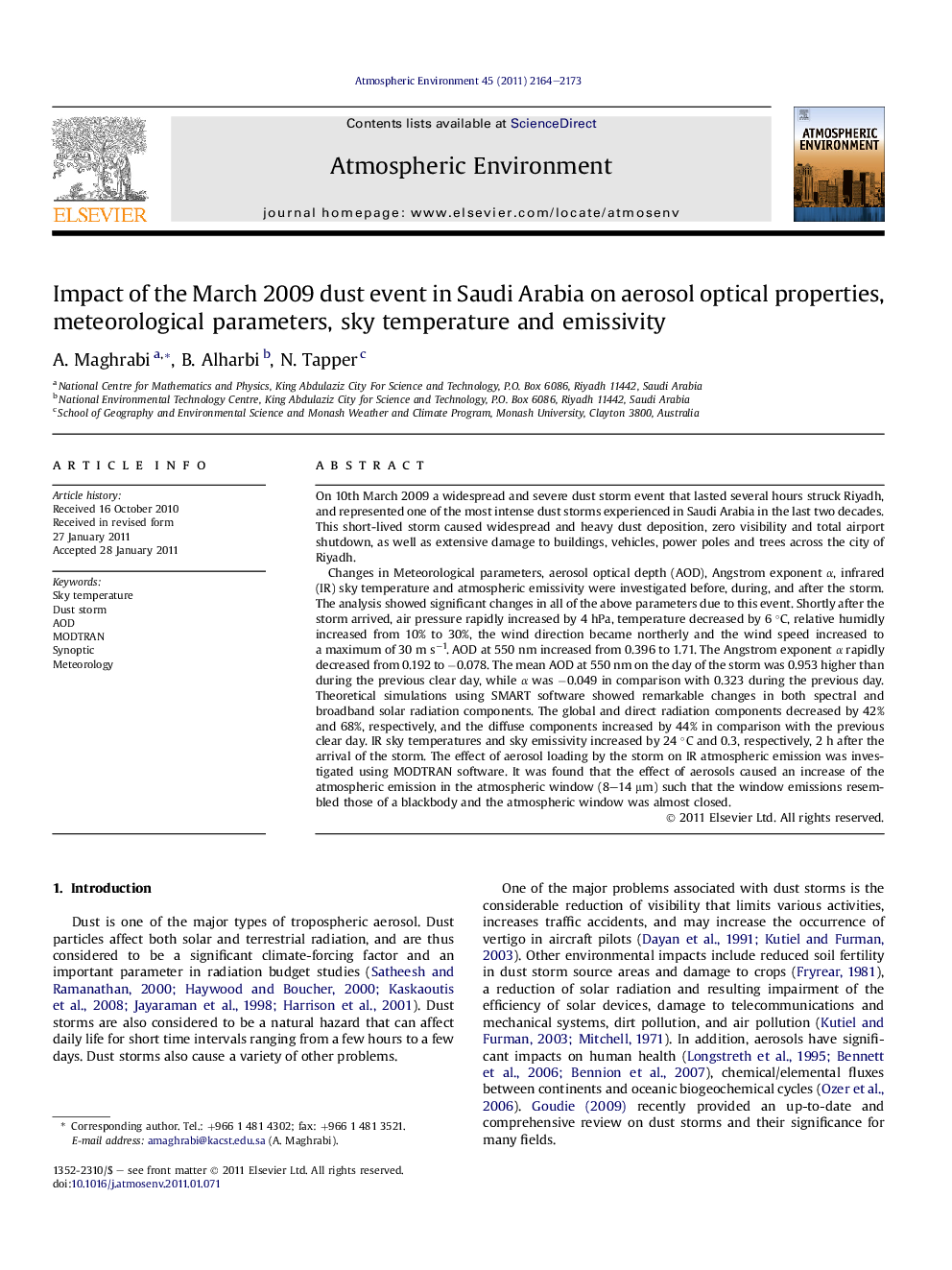| کد مقاله | کد نشریه | سال انتشار | مقاله انگلیسی | نسخه تمام متن |
|---|---|---|---|---|
| 4439842 | 1311035 | 2011 | 10 صفحه PDF | دانلود رایگان |

On 10th March 2009 a widespread and severe dust storm event that lasted several hours struck Riyadh, and represented one of the most intense dust storms experienced in Saudi Arabia in the last two decades. This short-lived storm caused widespread and heavy dust deposition, zero visibility and total airport shutdown, as well as extensive damage to buildings, vehicles, power poles and trees across the city of Riyadh.Changes in Meteorological parameters, aerosol optical depth (AOD), Angstrom exponent α, infrared (IR) sky temperature and atmospheric emissivity were investigated before, during, and after the storm. The analysis showed significant changes in all of the above parameters due to this event. Shortly after the storm arrived, air pressure rapidly increased by 4 hPa, temperature decreased by 6 °C, relative humidly increased from 10% to 30%, the wind direction became northerly and the wind speed increased to a maximum of 30 m s−1. AOD at 550 nm increased from 0.396 to 1.71. The Angstrom exponent α rapidly decreased from 0.192 to −0.078. The mean AOD at 550 nm on the day of the storm was 0.953 higher than during the previous clear day, while α was −0.049 in comparison with 0.323 during the previous day. Theoretical simulations using SMART software showed remarkable changes in both spectral and broadband solar radiation components. The global and direct radiation components decreased by 42% and 68%, respectively, and the diffuse components increased by 44% in comparison with the previous clear day. IR sky temperatures and sky emissivity increased by 24 °C and 0.3, respectively, 2 h after the arrival of the storm. The effect of aerosol loading by the storm on IR atmospheric emission was investigated using MODTRAN software. It was found that the effect of aerosols caused an increase of the atmospheric emission in the atmospheric window (8–14 μm) such that the window emissions resembled those of a blackbody and the atmospheric window was almost closed.
► Strongest dust storm on the last two decades on Saudi’s history.
► Analysis of Meteorological and AOD data.
► Its impact on the solar radiation components investigated theoretically.
► Its impact on the sky temperature investigated experimentally.
► Its impact on the sky temperature investigated theoretically.
Journal: Atmospheric Environment - Volume 45, Issue 13, April 2011, Pages 2164–2173